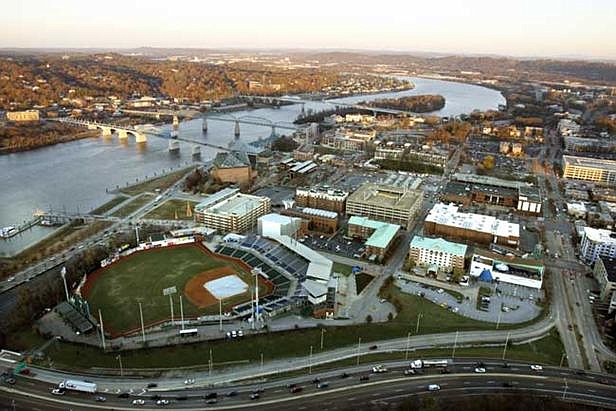Journalists see Chattanooga with fresh eyes
Tuesday, October 8, 2013
More than 500 out-of-towners gave Chattanooga journalists -- including me -- a fresh look at Chattanooga during the past week.
Most of the out-of-towners were journalists, too. They came here to attend the 23rd annual conference of the Society of Environmental Journalists. They came to see what Chattanooga, once the "dirtiest" city in America for air pollution and boasting the most polluted creek in the Southeast, had done to become an outdoor mecca.
What these newspaper, radio, magazine and blog writers told us, as we hosted them here from Wednesday to Sunday, made us realize how much we take our city for granted, and how much we should both congratulate ourselves (but also push ourselves).
Over and over, we heard, "I love your city;" or "This is a great town;" or "It's so beautiful here."
Some took a bicycle tour and rushed up to conference organizers to gush about the Tennessee Riverwalk. Four or five of them pinned me against a wall to ask seemingly 1,000 questions about how Chattanooga came to the "wonderful" decision to save the Walnut Street bridge and make it the springboard for new homes and businesses on the city's North Shore.
While taking in the sights of the 21st Century Waterfront on Friday, several conference attendees quizzed one of our business reporters about why there are not more shops and bars along the water where the Tennessee River skims our downtown.
Our reporter stroked his chin and told them: "You have to realized that just a few years ago, this all used to be a scrapyard. For this to be even like it is now is a minor miracle." But he told me later that the question set him thinking. He said he understands it's a slow process for entrepreneurs to ramp up plans for a newly opened area, but he wondered -- looking around on the waterfront -- even where there would be space for new eateries and watering holes.
Another attendee -- yes, one from a much larger city -- was shocked that we didn't have more mass transit. Clearly that's a need, he said. I nodded, wondering why our local culture is still so car-oriented even in a town that has a free electric shuttle. I can't remember the last time I took that shuttle to grab lunch.
One woman from California asked about the city's diversity. "It seems so lily white," she said. My eyebrows went up and I asked why she thought that. After all, the city's population is more than 35 percent black.
"Well, mostly," she explained, "from what I've seen in the ads around the convention center and downtown."
Note to Chattanooga: Let's show off our diversity better.
During a visit to the Tennessee Aquarium, a young journalist from the Midwest mused to me, "I'll bet there's a lot of taxpayers' dollars in this." He swept his hand toward the river and ocean buildings.
"Actually, no," I told him, adding that the aquarium was seeded with an $11 million donation from Chattanooga's then-richest resident, and the rest was built with public-private partnerships, using a first-ever hotel-motel tax so visitors helped pay the "public" part. The city spent only to build the landscaping of the public park around the buildings.
He replied with just one word. "Wow!"
On Sunday, at the end of the conference, the journalists had what we call a "pitch slam" for book ideas. One pitched publishers on an idea about innovative cities, and Chattanooga was on her list. Another pitched an idea about the politics of hydraulic fracturing for natural gas called fracking -- something that's new and threatening to our region.
As we all stood to walk out of the Hunter Museum of American Art with its windowed panorama view of the serene Tennessee River, I asked a writer who lives near Boulder, Colo., to tell me his take-away about Chattanooga.
He looked at me and smiled. "What I want to know is what's next? You've done so much here in 40 years, but what are you going to do in the next 40 years?"
Good question. One thing's for sure: We can't sit our laurels.
